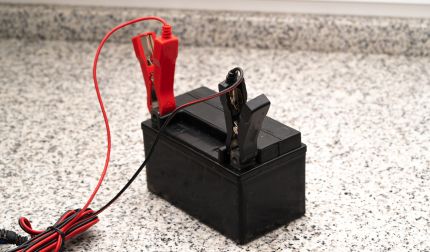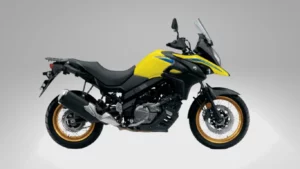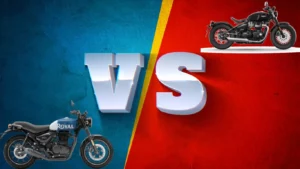For those who enjoy riding off-road, dirt bikes are a popular option since they offer heart-pounding thrills and an unmatched sensation of independence. From muddy roads to rocky hillsides, these adaptable motorcycles are built to handle unforgiving terrain.
It’s critical for both aficionados and potential customers to comprehend the parts that make up a dirt bike, especially its batteries. The evolution of dirt bike batteries and their use in both gas- and electricity-powered dirt bikes are explored in this article.
Evolution of Dirt Bikes
1. Early gas-powered dirt bikes
Early in the 20th century, light, simplified motorbikes made exclusively for off-road use were introduced; these were the first gas-powered dirt bikes. These early models were equipped with combustion engines and simple electrical systems, providing the necessary power for lighting and ignition.
2. Introduction of electric dirt bikes
With advancements in battery technology and growing concerns over environmental sustainability, electric dirt bikes have become increasingly popular in recent years. These bikes, which are propelled by high-capacity batteries and electric motors, provide a cleaner, quieter alternative to their gas-powered counterparts.
3. Hybrid dirt bikes
Hybrid dirt bikes are a relatively new development, combining the best of both worlds. These bikes come equipped with a battery pack, an electric motor, and a small internal combustion engine. They offer riders the option to switch between electric and gas power, providing versatility and extended range.
4. Traditional Gas-Powered Dirt Bikes
Internal combustion engines are the source of power for gas-powered motocross bikes. These engines burn a mixture of air and fuel, creating a high-pressure gas that drives the piston, ultimately producing mechanical energy to propel the bike.
Want to install lights on dirt bike then you read how to put lights on a dirt bike without a battery.
Basic Electrical System Components
Stator
The stator is a stationary coil of wire that generates electrical power when the engine is running. It serves as an alternator, producing electricity to charge the battery and power other electrical components.
Regulator/rectifier
Alternating current (AC) generated by the stator is transformed into direct current by the regulator/rectifier (DC). It also regulates the voltage, ensuring that the battery receives the appropriate charge to maintain its health.
Ignition system
The spark plug and ignition coil, which are parts of the ignition system, are essential for starting the engine.
The ignition coil amplifies the initial electrical current from the battery to create a high-voltage spark that ignites the fuel and air mixture in the combustion chamber.
Role of the battery
In gas-powered dirt bikes, the battery primarily serves as a power source for starting the engine and powering electrical components, such as lights and instrumentation. It also stores energy generated by the stator, ensuring consistent electrical supply when the engine is not running.
Battery Types in Gas-Powered Dirt Bikes
1. Lead-acid batteries
Pros and cons
The most prevalent kind of battery used in gas-powered dirt bikes is a lead-acid battery. They are widely accessible, reasonably priced, and simple to recycle. They are bigger and heavier for the same capacity than lithium-ion batteries because they have a poorer energy density.
Maintenance tips
Lead-acid batteries require periodic maintenance to ensure optimal performance and longevity. It is essential to regularly check the electrolyte levels and top up with distilled water as needed. Additionally, keeping the battery fully charged during periods of inactivity helps prevent sulfation, which can damage the battery.
2. Lithium-ion batteries
Pros and cons
Due to its greater energy density, less weight, and longer lifespan, lithium-ion batteries are becoming more and more common in gas-powered dirt bikes. They also require minimal maintenance compared to lead-acid batteries. Lithium-ion batteries have a higher price tag and are more susceptible to high temperatures, which may affect their performance and lifespan.
Maintenance tips
Although lithium-ion batteries don’t require much upkeep, it’s important to keep them completely charged and prevent over-discharging. Also, keeping the battery dry, cold, and out of direct sunlight can prolong its life and retain its capacity.
Electrical System Components in Gas-Powered Dirt Bikes
Kickstart
Many gas-powered dirt bikes use a kickstart mechanism, which requires the rider to kick a lever to turn the engine over and ignite the fuel-air mixture. This system is mechanically simple and does not rely on the battery for starting.
Electric start
These systems use a small electric motor, powered by the battery, to turn the engine over and initiate combustion. Electric start systems are more convenient and user-friendly but rely on a healthy battery to function effectively.
Headlights and taillights
Although they are not meant for usage on public roads, off-road dirt bikes may not always have headlights and taillights. However, many riders choose to install aftermarket lighting systems for increased visibility and safety during nighttime rides.
Turn signals and brake lights
Turn signals and brake lights are essential components for street-legal dirt bikes, providing communication with other road users. These lights are powered by the bike’s battery and electrical system.
Speedometers and trip meters
While not always standard on off-road dirt bikes, speedometers and trip meters are useful tools for measuring speed and distance traveled. These devices are typically powered by the bike’s electrical system and battery.
GPS and communication devices
Modern dirt bike riders often utilize GPS devices and communication systems for navigation and maintaining contact with fellow riders. These accessories require a reliable power source, typically provided by the dirt bike’s battery.
Electric Dirt Bikes
High-capacity batteries and electric motors power electric dirt motorcycles, which provide a cleaner and quieter alternative to conventional gas-powered bikes. These bikes are gaining popularity due to their eco-friendliness, instant torque delivery, and reduced maintenance requirements.
Battery technology in electric dirt bikes
Lithium-ion polymer batteries
Lithium-ion polymer batteries are commonly used in electric dirt bikes because they offer high energy density, lightweight construction, and the ability to hold a charge for extended periods. These batteries are more expensive than traditional lead-acid batteries but offer superior performance and lifespan.
Solid-state batteries
Solid-state batteries are an emerging technology with the potential to revolutionize electric dirt bikes. They offer higher energy density, faster charging times, and improved safety compared to lithium-ion batteries. However this technology is still in its infancy and is not yet generally accessible for commercial application.
Charging systems
Standard charging
Standard charging involves plugging the electric dirt bike into a household electrical outlet, typically taking several hours to fully charge the battery. This method is convenient and cost-effective, as it does not require specialized charging equipment.
Fast charging
Fast charging systems use high-power chargers to replenish the battery in a fraction of the time required for standard charging. While fast charging is more convenient, it may require dedicated charging equipment and access to high-voltage power sources.
Performance Comparison: Gas-Powered vs. Electric Dirt Bikes
1. Power delivery
Electric dirt bikes deliver instant torque, providing rapid acceleration and a smooth power curve. Gas-powered dirt bikes, on the other hand, require precise throttle control and gear shifting to manage power delivery effectively.
2. Range and battery life
Gas-powered dirt bikes generally have a longer range than electric dirt bikes, as they can be easily refueled during long rides. Electric dirt bikes are limited by their battery capacity, which may require riders to plan their routes around charging stations or carry spare batteries. However, advances in battery technology are steadily improving the range of electric dirt bikes.
3. Maintenance and longevity
Electric dirt bikes require significantly less maintenance than gas-powered bikes, as they do not have complex internal combustion engines with numerous moving parts. Routine maintenance for electric dirt bikes primarily involves checking the battery, brakes, and tires. Gas-powered dirt bikes require more frequent attention, including oil changes, air filter cleaning, and valve adjustments.
Environmental Considerations
1. Emissions and air quality
Electric dirt bikes produce zero tailpipe emissions, contributing to improved air quality and reduced greenhouse gas emissions. Gas-powered dirt bikes generate exhaust emissions, which can contribute to air pollution and negatively impact the environment.
2. Noise pollution
Electric dirt bikes are considerably quieter than gas-powered bikes, reducing noise pollution and making them more suitable for use in residential areas or sensitive environments. The reduced noise levels can also benefit riders, as they can better hear their surroundings and communicate with fellow riders.
3. Sustainable manufacturing and recycling
As electric dirt bikes gain popularity, manufacturers are increasingly focused on sustainable production methods and materials. Additionally, recycling programs for electric dirt bike batteries are becoming more widespread, helping to minimize the environmental impact of battery disposal.
Choosing the Right Dirt Bike for Your Needs
Your riding preferences and intended use play a significant role in determining the ideal dirt bike. Consider whether you prefer the instant torque and reduced maintenance of electric dirt bikes, or the longer range and familiar feel of gas-powered bikes.
Factors to consider when selecting a dirt bike
Terrain and location
The type of terrain you plan to ride on will influence your choice of dirt bike. Gas-powered dirt motorcycles might be more suited for extended trips and varied terrain, whereas electric dirt bikes excel in difficult off-road situations and trail riding.
Budget and maintenance costs
Consider the upfront cost of purchasing a dirt bike, as well as ongoing maintenance expenses. Electric dirt bikes tend to have higher initial costs but lower maintenance costs, while gas-powered bikes may be less expensive upfront but require more frequent maintenance.
Environmental impact
If environmental sustainability is a priority, electric dirt bikes offer a cleaner and more eco-friendly alternative to gas-powered bikes.
Frequently Asked Questions (FAQs)
A. How long do dirt bike batteries last?
Dirt bike battery life depends on the type of battery and usage conditions. While lithium-ion batteries can live up to five years or longer with adequate maintenance, lead-acid batteries normally only last two to three years.
B. Can I convert my gas-powered dirt bike to electric?
While it is technically possible to convert a gas-powered dirt bike to electric, the process can be complex and expensive. It may be more cost-effective and practical to purchase a purpose-built electric dirt bike.
C. How do I maintain my dirt bike battery?
Proper battery maintenance varies depending on the battery type. For lead-acid batteries, regularly check the electrolyte levels and keep the battery fully charged. Avoid over-discharging lithium-ion batteries, and store them in a dry, cool environment.
D. Are electric dirt bikes better than gas-powered ones?
Over gas-powered bikes, electric dirt bikes provide a number of advantages, such as less maintenance requirements, instant torque, and a greener profile. However, they typically have a shorter range and higher upfront cost. Ultimately, the “better” choice depends on individual preferences, riding style, and intended use.
E. Can I ride an electric dirt bike on public roads?
To ride an electric dirt bike on public roads, it must meet specific requirements, including proper lighting, mirrors, and horn, and be registered with the appropriate authorities. Some electric dirt bikes are designed for off-road use only, while others can be converted or are sold as street-legal models. Always consult local regulations and manufacturer guidelines before attempting to ride an electric dirt bike on public roads.
Conclusion
Dirt bike batteries play a crucial role in the performance and functionality of both gas-powered and electric dirt bikes. Understanding the different types of batteries, their maintenance requirements, and the associated electrical systems can help you make an informed decision when selecting a dirt bike. Ultimately, your choice will depend on your riding preferences, intended use, and environmental priorities.






